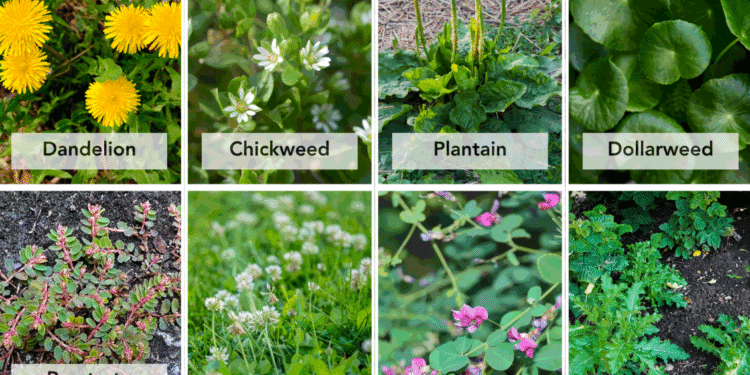Introduction:
The Types of Lawn Weeds – Lawn weeds are more than just a small nuisance to homeowners, they could be one of the biggest nightmares for any cherished home! From dandelions overtaking your front yard, to weeds slowly creeping into your garden beds, these lawn weeds are threats to more than just your lawn, they’re threats to the beauty and serenity of your outdoor space.
That is why The first step in taking back your lush, healthy lawn is knowing what you are up against. It is critical to recognize what types of lawn weeds have invaded your yard, in order to have a fighting chance and we are here to help!
This identification guide will highlight the 15 most common lawn and garden weeds you may face. You will learn how to identify the weeds, where they typically grow, and, most importantly, the best ways to control or remove them so that YOU can keep your property free of weeds. After reading this guide, you will be ready for even the worst weed problems.
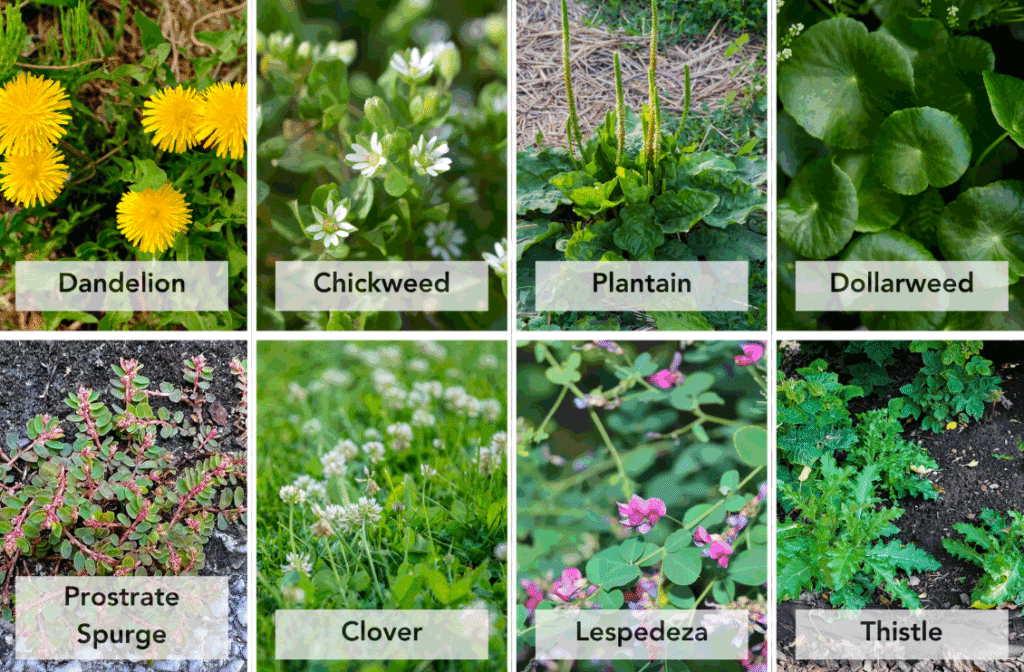
Understanding the Different Types of Lawn Weeds
Before we look closely at particular types of weeds, it is important to remember that weeds are plants growing where they are not wanted. Some plants are just more competitive and troublesome than others. There are many ways to classify the types of lawn weeds helping you to select the best control methods.
Weed Classification of Growth Cycle
Annual weeds complete their entire life cycle in one growing season. They germinate from seeds, grow, reproduce, and die all within one year. Crabgrass and chickweed are both examples of annual weeds. With annual weeds, it is generally easier to control them because they do not have an established root system.
Perennial weeds live for two or more years and usually have substantial root systems that contain stored energy. Once their above the ground part is removed, many perennials will re-sprout from their roots. Dandelions and plantains are common examples of perennial weeds where effective control requires more persistent effort.
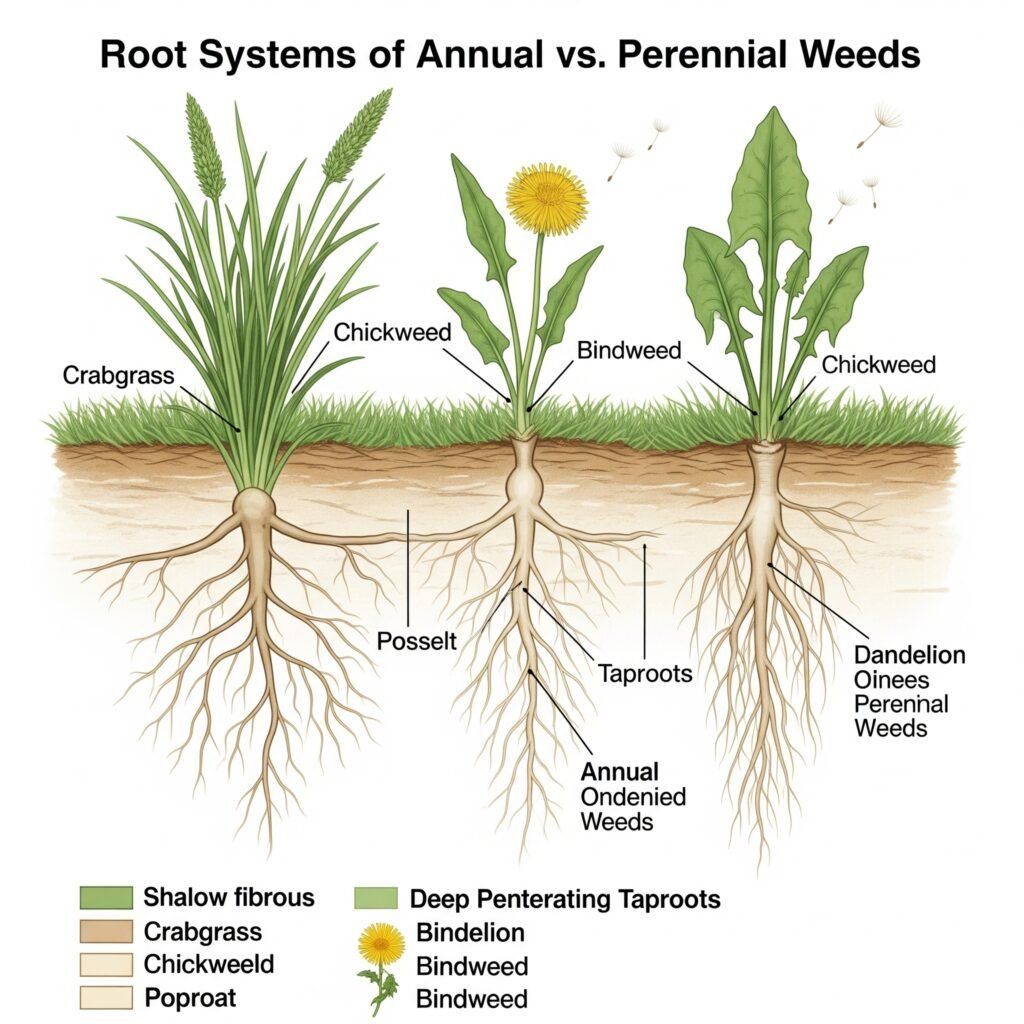
Lawn Weed Classification by Leaf Type
Broadleaf weeds are any weed with wide, flat leaves, with visible veins and are broadleaf plants. The majority of flowering weeds are broadleaf weeds including dandelions, clover and plantains. Broadleaf weeds are typically easier to view and identify by their distinct shape and flowers. Grassy weeds are tears as they can look like grass. Two examples of grassy weeds are crabgrass and quack grass. They can often be more difficult to see in your lawn; however, if they grow taller or develop seed heads they will be more visible.
Broadleaf perennial weeds
Perennial broadleaf weeds fall into the most difficult categories of lawn weeds to control: they come back year after year. These weeds can develop expansive roots to withstand poor soil or weather conditions and regenerate after the top of the plant is cut-off.
Dandelion (Taraxacum officinale)
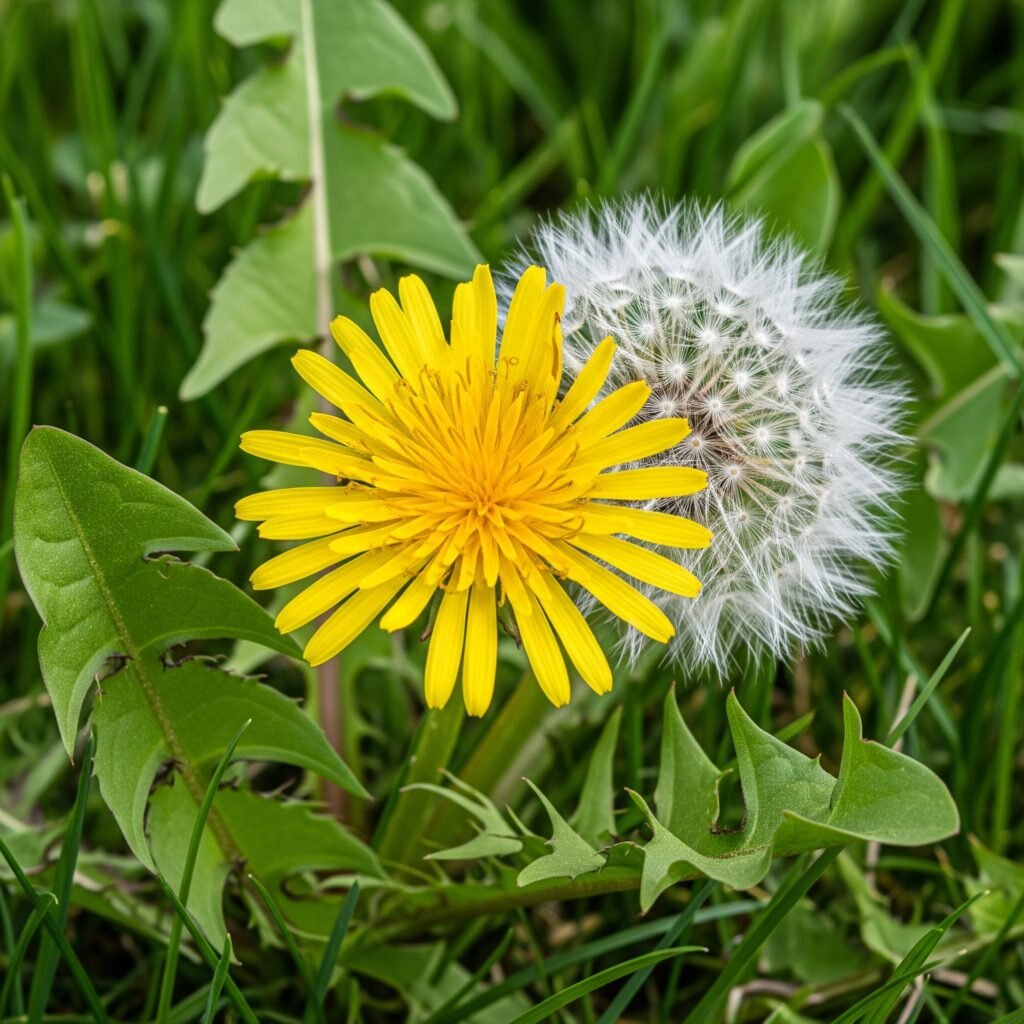
Size: 12 inches tall, 6-16 inches wide
Where It Growth: Lawns or gardens, sun-shade
Appearance: Long taproot, notched leaves everything forms a rosette. Yellow flowers become white puffball seed heads when mature.
Dandelions are probably the most recognizable lawn weed to homeowners. The deep taproot of dandelions can extend up to 10 inches, which allows them to outlast drought conditions. All parts of the dandelion are edible and have been medicinally used for centuries. However, most homeowners prefer their dandelions not to be growing in their perfectly groomed lawns.
Control measures: Apply a broadleaf herbicide in the fall when plants are moving energy to their roots. You can hand-pull the weed, but ensure you remove the entire taproot, otherwise, it will grow back.
Plantain (Plantago major)
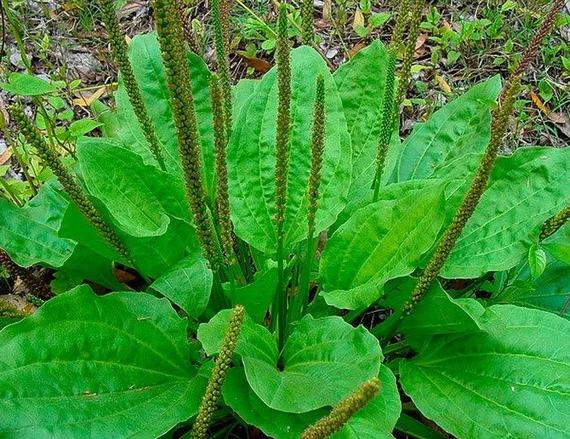
Size: 8 inches tall x 12 inches wide
Where It Grows: Moist lawn and garden areas; in sun or shade.
Appearance: Broad, flat, oval-shaped leaves forming a low rosette and with a strong parallel venation.
Plantain prefers compacted soil and high traffic areas. The leaves are quite identifiable with the parallel veins running the length of the leaf, or from base to tip. Native Americans referred to plantain as a “white man’s footprint” because it appeared to grow wherever Europeans travelled and disturbed soil.
Control Methods: Improve drainage and compaction. Hand removal of individual plants or apply post-emergent broadleaf herbicides.
White Clover (Trifolium repens)
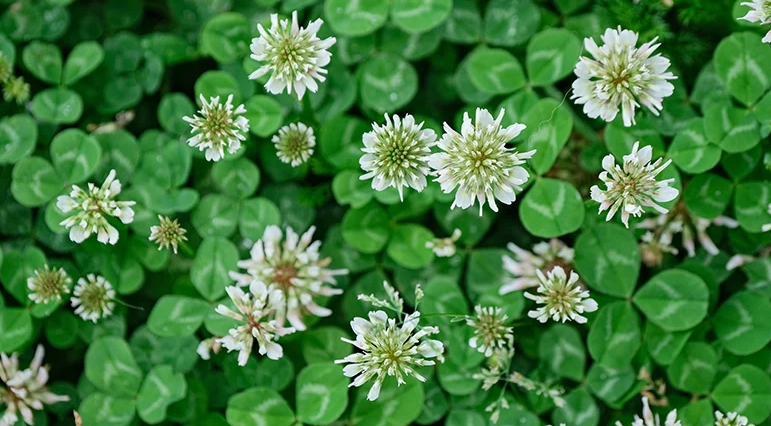
Size: 8-10 inches tall, 12 inches wide
Where It Grows: Lawn, landscape, and garden; in sun to partial shade.
Appearance: Three lobed leaves and round clusters of white flowers.
White clover spreads quickly through surface runners and forms thick mats. Many homeowners do consider clover a weed, but clover putting care into soil (adds nitrogen) and beneficial pollinators (because it has nectar).
Control Methods: Iron based herbicides are very effective in lawn application. A thick growing lawn will naturally suppress clover growth.
Canada Thistle (Cirsium arvense)
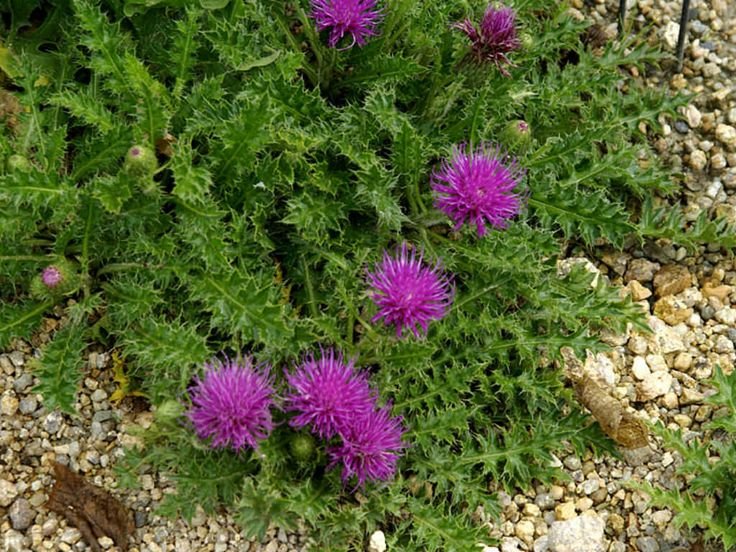
Size: Up to 6 feet tall and 3 feet wide
Where It Grows: Sunny lawn, landscape, or garden areas
Appearance: Spiny, gray-green leaves and purple flowers with a perennial deep root structure. The Canada thistle (which is actually from Europe) is one of the most invasive perennial weeds. It has a root system that can reach 3 feet or more in all different directions which makes it very difficult to eradicate entirely.
Control Methods: Continuous mowing to eventually weaken it. Broadleaf herbicide use in the spring or fall will work best for controlling Canada thistle. Always wear gloves with the thistle to gloves made of thick/scalp material (2-5) if handling.
Warning: With thistle weeds, you should never forget to put on protective clothes and thick gloves and before handling your hands and skin become greatly infected. The spines can stab through clothing and if the wound is not cleaned properly could easily become infected.
Broadleaf annual weeds
Broadleaf annual weeds grow to full size in one year, die, and produce many thousands of seeds that produce new generations of plants. Recognizing these types of lawn weeds offers the identification of the best timing to manage weed control treatments that are most effective.
Chickweed (Stellaria media)
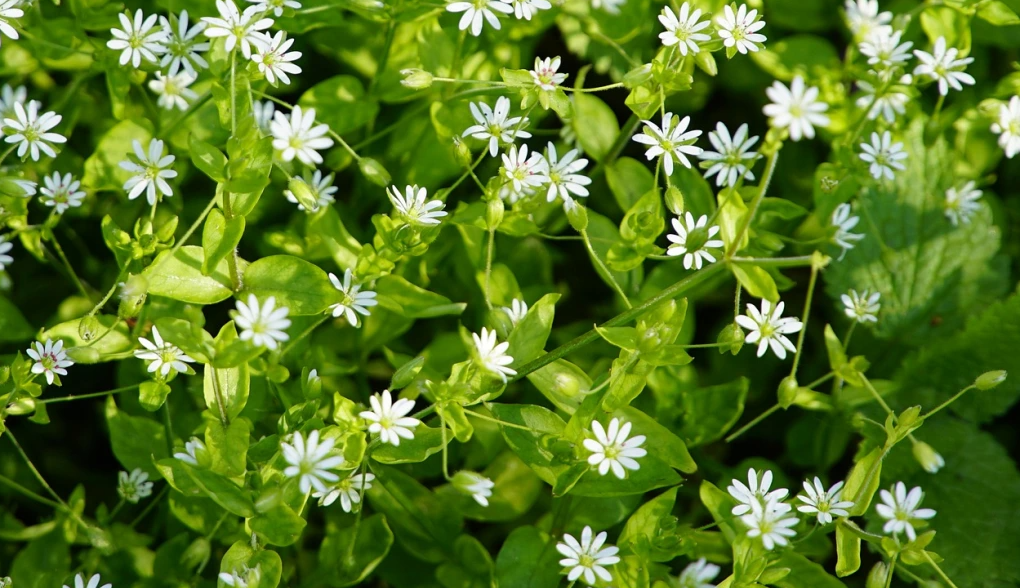
Size: 6 in. tall, 12 in. wide
Where Grown: Rich, moist soil – in sun or shade
Appearance: Small oval leaves at ground level, sprawling stems and small, star-shaped (white) flower.
Chickweed grows best in cool moist conditions. The plant is still active during mild-winter weather because it prefers cool temperatures. because it can create dense mats of leaves, it will choke out other growing plants including the desirable grass.
Control Methods: Pre-emergent herbicide application, earlier in spring will help to stop germination of new weeds. Hand-pulling from patches of weeds up to 3 feet.
Henbit (Lamium amplexicaule)
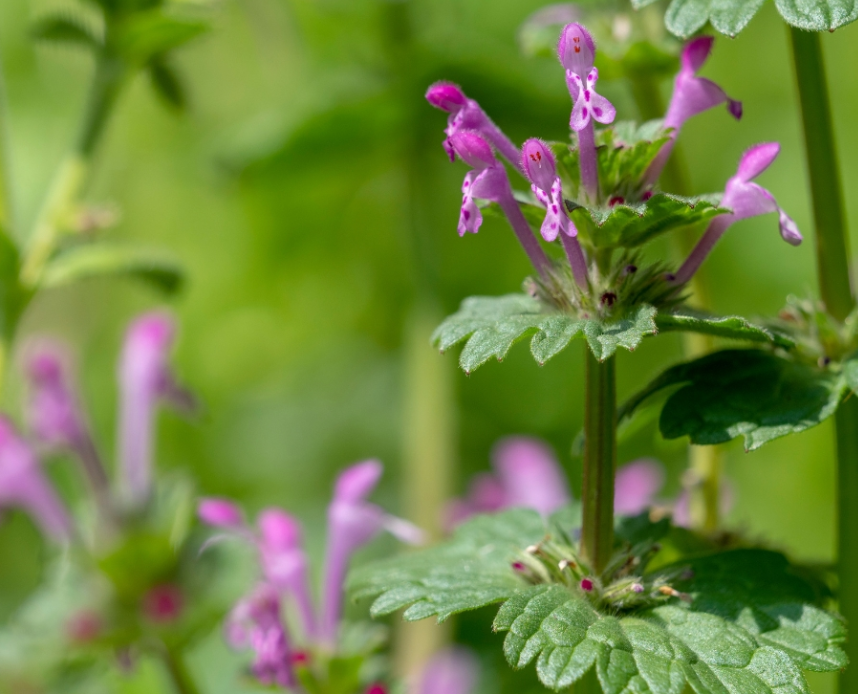
Size: Up to 12 inches tall and wide
Where Grown: Sunny or shady lawn, landscape, or garden area.
Appearance: Low creeping plant, scalloped edge leaves, and small purple flowers. Henbit is a winter annual that thrives in cooler months. With its square stems and purple flowers, it’s fairly easy to recognize. In addition to being edible, henbit is related to mint.
Control Methods: For henbit, pre-emergent herbicides in late summer will prevent spring emergence. Post-emergent broadleaf herbicides work well on henbit that is a actively growing plant that is competitive with grass.
Black Medic (Medicago lupulina)
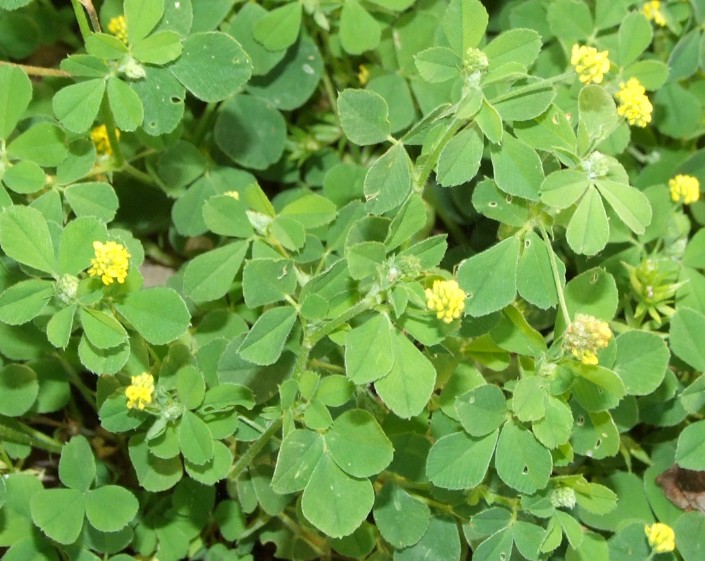
Size: 1-2 feet tall, 1 foot wide
Where It Grows: Poor, dry soils in full sun
Appearance: Three-leaflet leaves similar to clover, with small yellow flowers that form dense mats.
Black medic weed is often confused with clover, however the leaves and flowers are different, black medic has smaller leaflets and yellow flowers instead of white. Although black medic weeds are beneficial for soil because they fix nitrogen, they can easily overwhelm desired grasses.
Control Methods: Typically improve soil conditions with organic matter and proper water. May hand-pull small areas or use broadleaf herbicides.
Purslane (Portulaca oleracea)
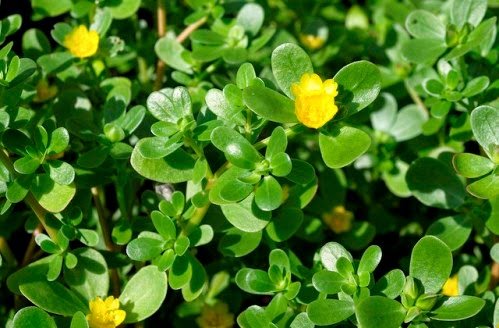
Size: Up to 6 inches tall and 2 feet wide
Where It Grows: Dry and sunny landscape and garden areas.
Appearance: Fleshy and dark green like succulent leaves with small yellow flowers.
Purslane is a succulent weed that can store water in its thick leaves and stems, plus it is edible, highly nutritious, and has more omega-3 fatty acids than many fish.
Control Methods: Hand-pulling works, but you need to remove the entire plant, because if you just break the stem it can take root from that piece. Pre-emergent herbicide can prevent germination.
Grassy and Grass-Like Weeds
Grassy weeds often annoy homeowners since they look like the plants in their lawn until they grow larger than the surrounding grass or develop their stems and flower heads that are indicative characteristics of grassy weeds. It will require a different control process.
Crabgrass (Digitaria sanguinalis)
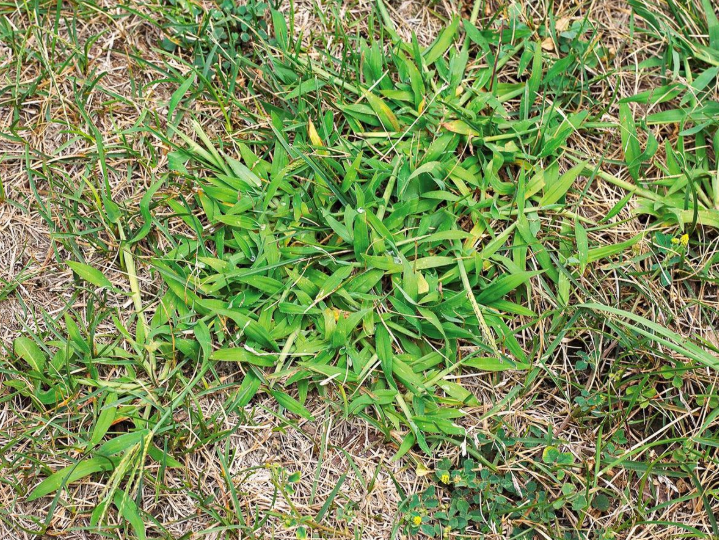
Size: 18 inches tall, up to 20 inches wide
Where It Grows: Lawn, landscape, and garden in sun or shade
Appearance: Wide grass blades, carrying the four-finger seed head that spreads from a common stalk
Crabgrass is most likely the historical grassy weed. It is an annual plant that germinates in the spring, when the soil temperature is consistently between 55-60 °F. Each crabgrass plant can produce over 8,000 seeds.
Control Processes and Herbicides: The best way to control is to apply a pre-emergent herbicide in early spring before the germination occurs. For post-emergent herbicides, herbicides can be used as spot treatments to kill out those individual areas.
Quack grass (Elymus repens)
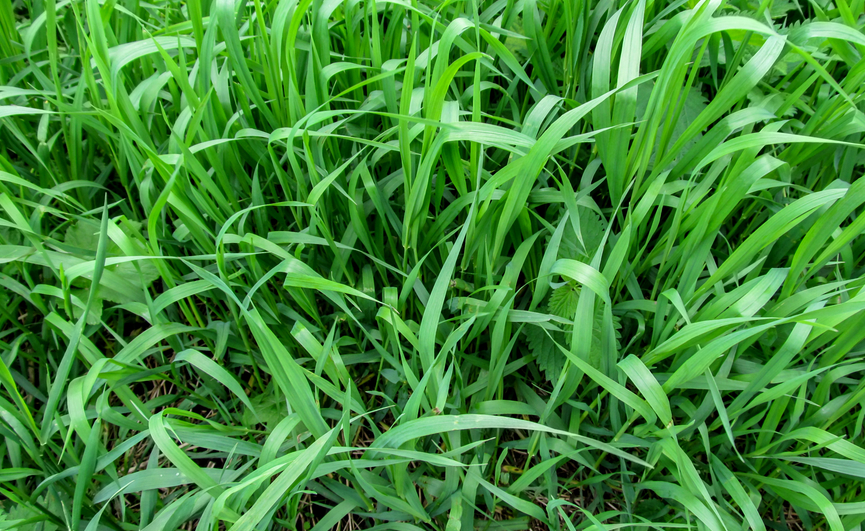
Size: 3 feet tall and several feet wide
Where It Grows: Landscape and garden in sun or shade
Appearance: Wheat-like flower spikes that are much higher than the grass-like foliage; has aggressive underground rhizomes
Quackgrass can grow several feet away from a parent plant via large underground rhizomes. For control measures to hinder plant growth efforts should be focused on finding and removing as many pieces of broken rhizome as possible, since every broken piece of rhizome can start another new plant.
Control Practices and Herbicides: Control of quackgrass can be accomplished by repeatedly digging to remove any remaining pieces of rhizome, or you can also use non-selective herbicides as a spot treatment. The best control measure you can take for quackgrass is to try and establish a mulched landscape that is extremely thick to discourage plant growth.
Nutsedge (Cyperus esculentus)
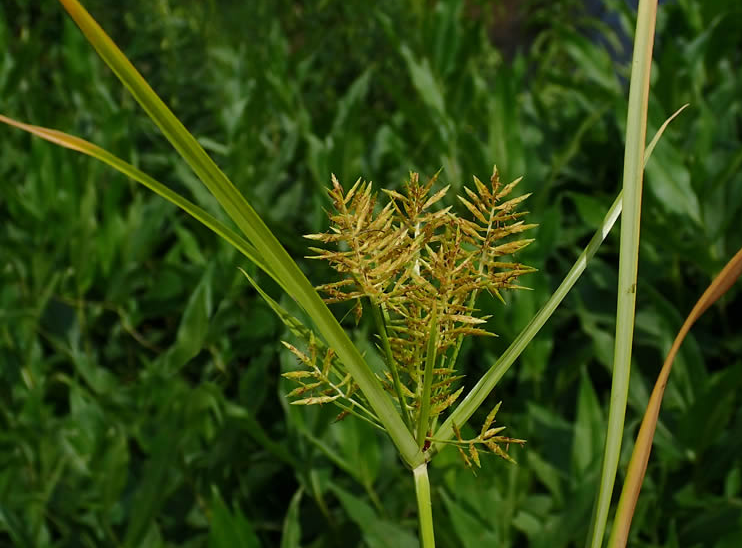
Size: 2 feet tall, 1 foot wide
Where it grows: Lawn, landscape, or garden area in sun or shade
Appearance: Triangular stem, thin grass-like leaves, and small nut-like tubers located underground. Nutsedge isn’t a grass; it’s a sedge. You can recognize it by the triangular stem (roll between your fingers) and its known behavior of growing faster than the grass around it.
Control methods: Nutsedge herbicides (specialized herbicides designed for use on lawns and that specifically manage nutsedge) are available. Hand-pulling requires removal of all tubers left underground.
Dallisgrass (Paspalum dilatatum)
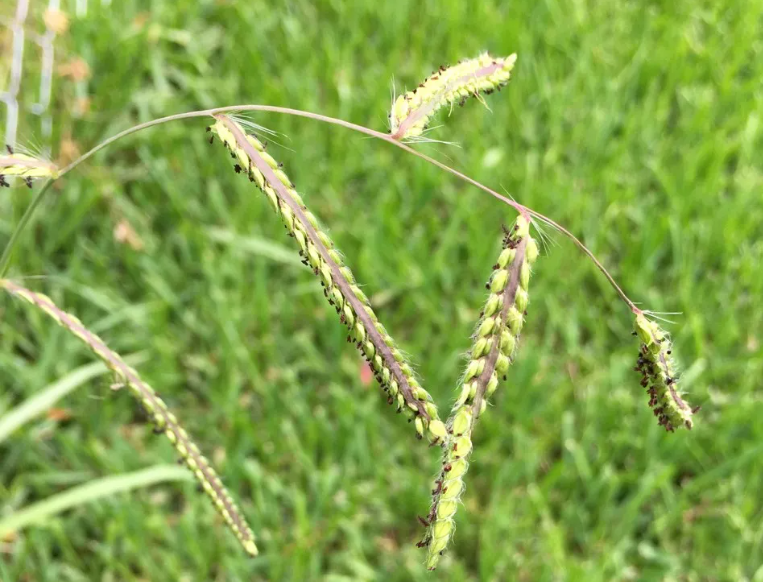
Size: 14 inches to five feet tall, 18 inches wide or larger
Where it grows: Sandy and clay soils and in full sun or partial shade
Appearance: Coarse-texture grass in round clumps growing with large seed heads. Dallisgrass forms distinct round patches, and may look like a weed that stands out from the regular turf. Dallisgrass is a warm-season perennial grass that is problematic in the southern regions.
Control methods: Maintaining healthy, dense turf where Dallisgrass can’t grow. The only option is to use a post-emergent herbicides to send it to turf death or hand pulling out whole clumps of grass.
Expert opinion: “The key to controlling grassy weeds is prevention by maintaining thick and healthy turf. Most grassy weeds emerge and grow where there is thin or bare turf, where grasses do not have to compete with grass.”
Poison Ivy (Toxicodendron radicans)
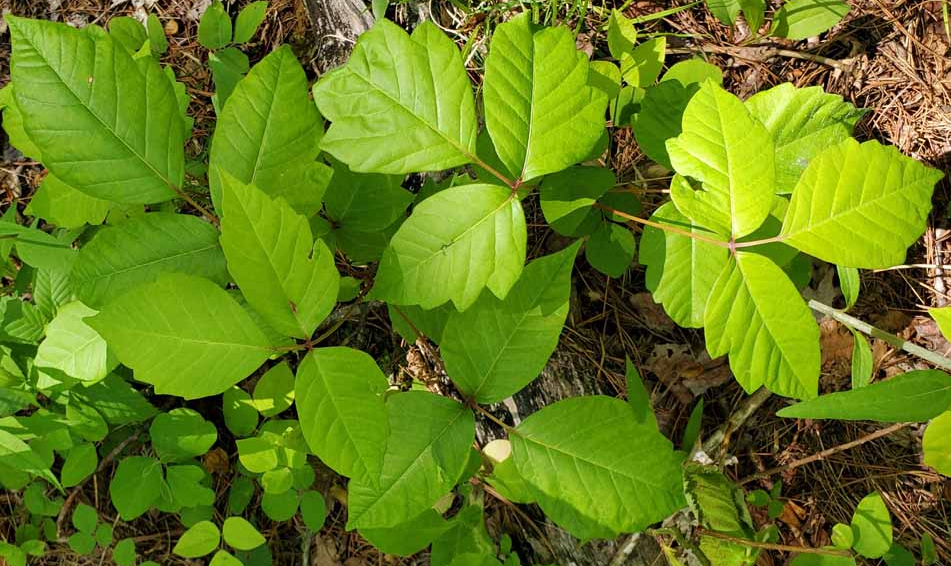
Size: 15 ft tall, 15 ft wide
Where It Grows: Sun or shade
Where to Look: In groups of three leaflets, in the form of a vine, shrub, or groundcover, with green berries
Poison Ivy contains urushiol oil that causes a very serious allergic reaction to most humans. Remember, you may not be aware of the urushiol, so you’ll want to remember the traditional phrase of “leaves of three, let it be.”
Control Methods: Burning poison ivy is not recommended due to the potential for lung irritation from the fumes. The best controls for a small amount is either using herbicides, or carefully removing it as you’ve learned above, by pulling the poison ivy and keeping plastic bags on your hands so you don’t have bare skin contact with the plant, this assumes that the roots of the plant are not broken in the process. After you have dealt with poison ivy, when you are finished, consider washing your tools in hot water and washing your clothing (without touching them) in hot water.
Black Nightshade (Solanum nigrum)
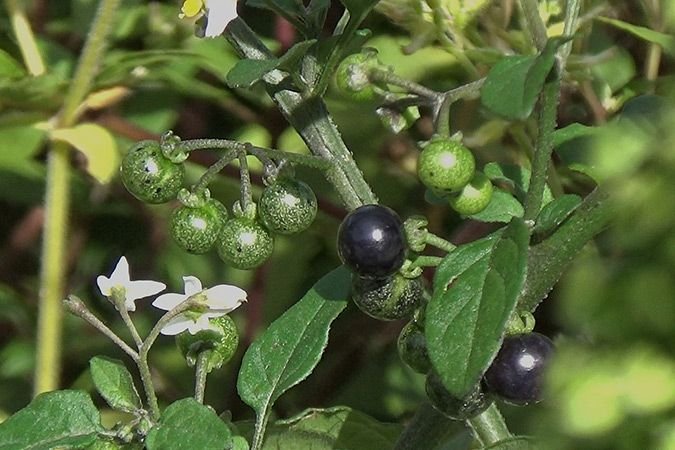
Typical Size: 2 ft tall, 2 ft wide
Where It Grows: Rich soil in shade or sunshine
Where to Look: White or purple blossoms, purple or red berries.
Black Nightshade can be toxic to humans and pets if consumed. All portions of it are toxic, but the berries are the most dangerous since they may attract children.
Control Methods: Hand-pull as soon as you see it, put it directly into the trash, do not compost, and for larger infestations use herbicides while ensuring that no berries drop in the process.
Pokeweed (Phytolacca americana)
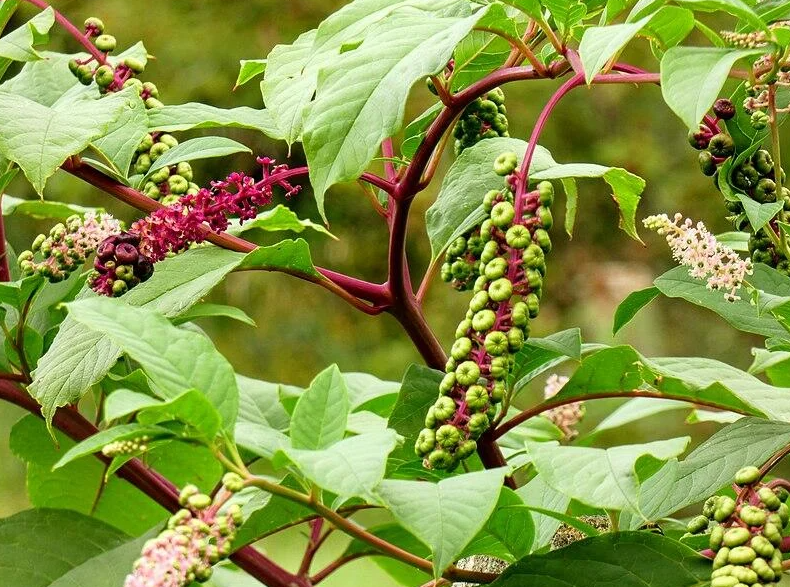
Size: 10 ft tall, 2 ft wide
Where It Grows: Sunny locations with rich soil
Where to Look: Large oval-shaped leaves, white blooming clusters of flowers, and dark purple berries.
The root of pokeweed is highly toxic, and all parts of pokeweed can cause some level of illness to humans and pets. The berries might be very interesting to kids and pets.
Control Measures: Hand-pulling young plants while wearing gloves or alternative, spot applying herbicides. Do not include pokeweed plant materials in your compost pile, ever!
Safety Notice: It is always best to supervise children and pets with any unknown plants. If you suspect accidental poisoning with any plants, it is important to call poison control or consult a health care provider immediately! Do not eat anything from the wild without proper identification and knowledge base.
Seasonal Lawn Weed Control Methods
The effective management of weeds requires understanding weed lifecycles and when they are most susceptible as they transition. Properly timing your control methods can greatly improve the success of your mechanical controls and reduce the quantity of herbicide needed in the process.
Spring Phase Control (March-May)
In the spring, post-emergent herbicide applications are best when you are watching for pests and weeds! Spring time is the best time to utilize pre-emergent herbicides! In the spring, as soil temperatures warm to 55-60°F or 12.78-15.56°C, is when annual weed seeds will begin to germinate. Pre-emergent herbicides create a protective barrier, therefore seeds cannot germinate, without damaging existing plants.
Spring control options include:
1. Crabgrass prevention
2. Chickweed
3. Annual broadleaf prevention
If you are performing pre-emergent applications, you want to do it right before all the forsythia blooms drop, as this is a natural indicator. Forsythia is where you want to be looking for optimal temperature for application.
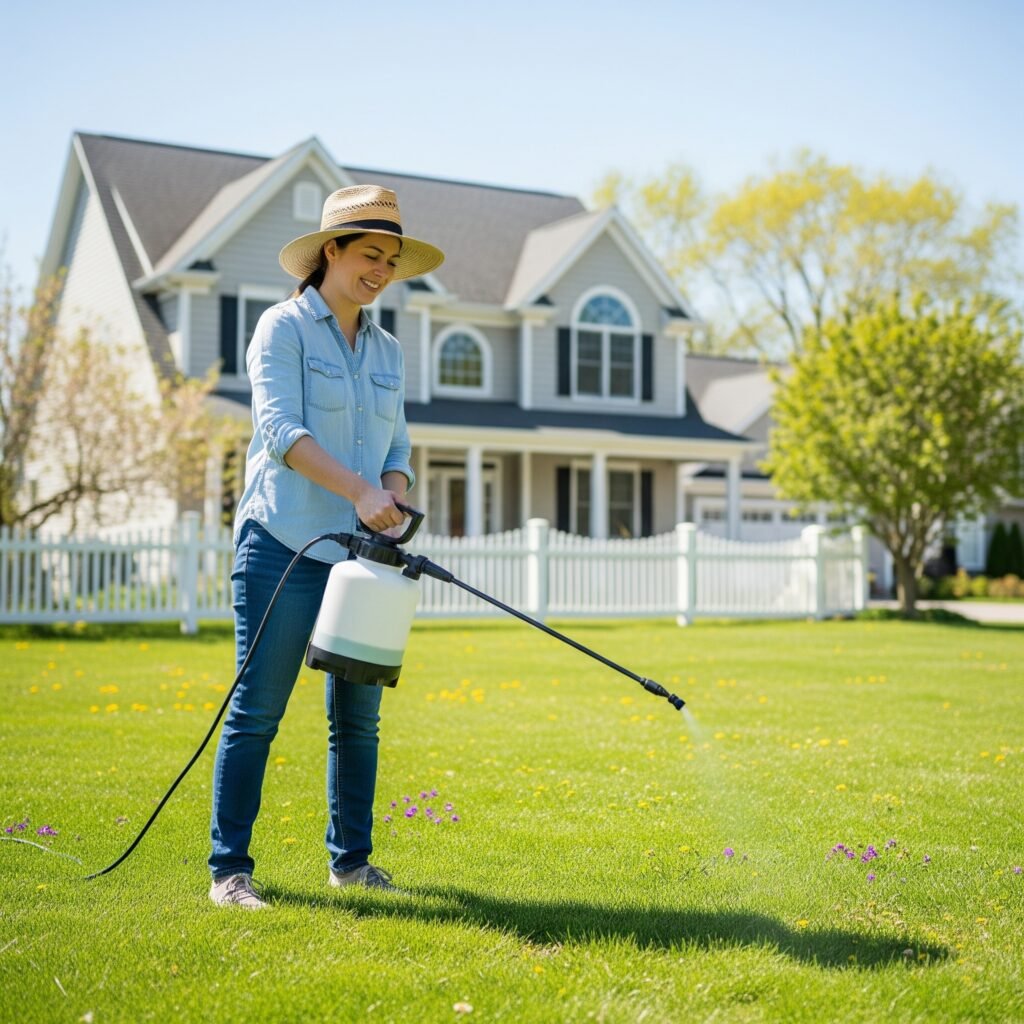
Summer Phase Control (June-August)
Summer is when you are concentrating on post-emergent control if weeds are actively growing. Many broadleaf weeds are actively growing so they will be most susceptible in an actively growing state. However, avoid herbicide applications when temperatures are above 85°F as this will cause stress to desirable plants.
Summer Phase control options include:
1. Spot treating incidental annual weeds
2. Take out young perennial weeds
3. Hand pulling perennial weeds as the soil is softer after any rain
Be sure to water in all herbicides thoroughly so your desirable plants can recover from treatment stress! Fall Control (September-November)
In terms of effectiveness for controlling perennial weeds, fall is the best time of year to act. This is because, as plants store energy for winter, they will store nutrients in the roots, which is where herbicides will be directed when there is less stress on desirable plants and winter coats are developed.
Fall advantages for weed control:
– Perennial weeds are at their most vulnerable
– Less stress on desirable plants
– Longer lasting effects
– Reduced emergence of weed growth in spring
Dandelions, plantain, and other perennial broadleaf weeds should be targeted during this important window of time.
Winter Planning (December – February)
Winter time is time for planning and preparation for the year ahead. This is the time to:
– Plan next year’s weed control strategy
– Order herbicides and equipment
– Identify strategic treatment areas
– Investigate any new weed species that may have appeared
Cold weather reduces the ability of weeds to grow, and some winter annuals will still be functional, such as henbit during mild winter periods.
Natural vs. Chemical Weed Control
For many homeowners, they would like to understand their options when controlling different types of lawn weeds apart from the dependence of synthetic herbicides. Both types have their benefits and drawbacks depending on the current situation.
Natural Weed Control
Hand-pulling is one of the best methods for controlling small weed populations. When hand pulling, do it after rain when the soil is soft, and be sure to take out the entire root system. This strategy is particularly effective for:
1. Young perennial weeds before root systems become established
2. Annual weeds before seeds are produced
3. Weeds growing in sensitive areas near water sources
Mulching will reduce many weeds because it prevents sunlight from reaching the seeds needed for germination. Mulch to a depth of 2- 3 inches using organic mulch around all desired plants. Be sure to make sure that the mulch is kept away from the stems of plants to help mitigate pest issues.
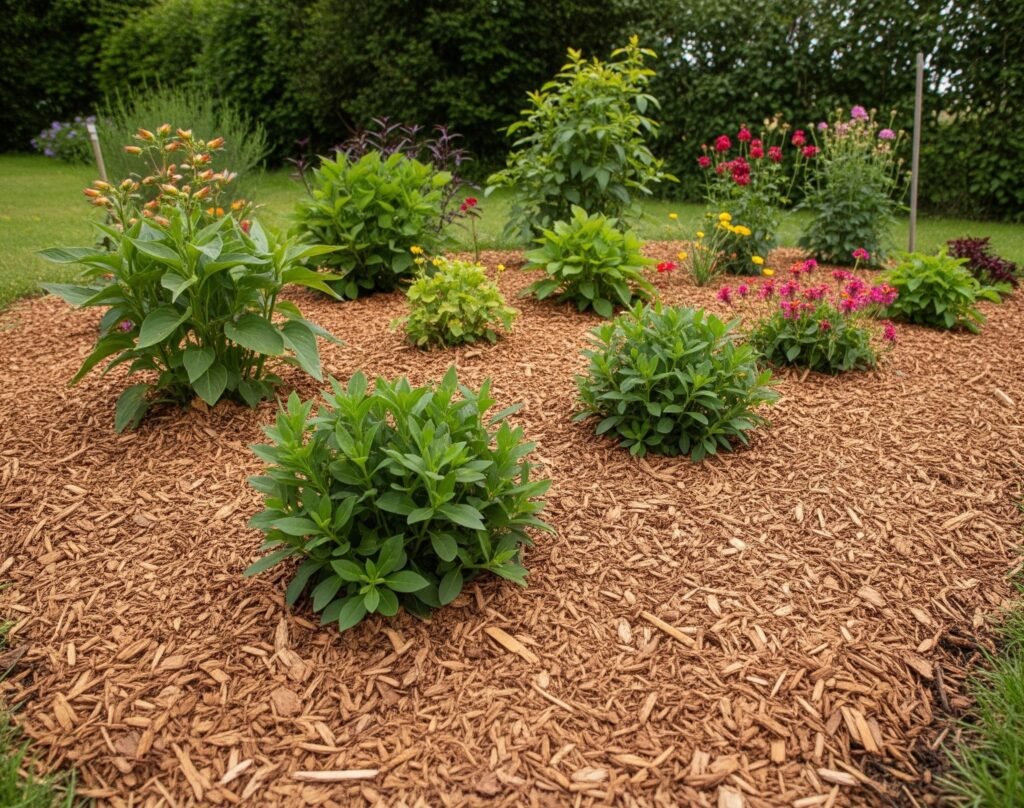
Cultural controls refer to growing conditions that provide benefits to desired plants or disadvantage weed species:
1. Weeds always take hold in worn areas, overseeding only the weak spots
2. Artificially improve drainage at wet spots
3. Fertilize to maintain a thick healthy turf
4. Increase pH to supply grass, over weeds
Organic herbicides use natural ingredients such as corn gluten meal (pre-emergent) or citric acid (post-emergent) to control weeds. Generally speaking, they are more conservative in use, and may require more frequent applications, and in most cases will not control any established perennial weeds very well.
Chemical Control Methods
Selective herbicides are only chemical options that can effect a specific type of weed only, without impacting desired plants; two types of selective herbicides are classified as broadleaf herbicides and only kill dicot plants (broadleaf weeds), but not monocot plants (grass) and, therefore well suited for lawn applications.
Non-selective herbicides kill any plant contact directly; nonselective herbicides are used for:
1. Spot treatments of weeds, if the area is not heavily planted
2. Preparing area, for replanting, or significant transitions
3. Weeding along fences, walkways, etc.
Pre-emergent herbicides are generally applied to prevent germination and can be highly effective if applied before the targeted weed seeds are able to sprout. Application timing can be tricky, if applied too early the pre-emergent will breakdown prior to the seeds germinating, but too late means they have already successfully established.
Post-emergent herbicides are applied to deprive any actively growing weed, most ideal timing is when plants are young and actively growing. Older plants, even if they are being stressed, make weed control more difficult.
Application Tip: Always read and follow herbicide labels in their entirety. Every label is a legal document which will specify how the product can be safely used and effectively utilized. Whether the product works or not will be influenced by weather, application rate or timing factors.
Prevention Techniques for Long-Term Success
The best way to control the various types of lawn weeds is to prevent them from becoming established in the first place. A comprehensive prevention program encourages the control of the right conditions that promote weed establishment and success.
Soil Health Management
Soil testing provides you with the pH, nutrient deficiencies and organic matter status that affects plant health. Most lawn grasses prefer soil with a pH of 6.0-7.0. Many types of weeds can tolerate a wider range of pH. Subsequent to testing soil and making any necessary amendments, proper fertilization will help maintain turf that is healthy and competitive. Using too much fertilizer can also promote weed growth, especially weeds that like to have nitrogen available like clover. To best understand what soil amendments to utilize, it is always best to either follow soil test recommendations or fertilizer label directions.
Increasing your soil’s organic matter content will help better manage soil structure, facilitate water retention, and allow for increased nutrient availability. Compost, aged manure and other amendments of either plant or animal source add organic matter to the soil and introduce beneficial soil microorganisms, which will enhance competition with any weed seeds that are present both actively or dormant.
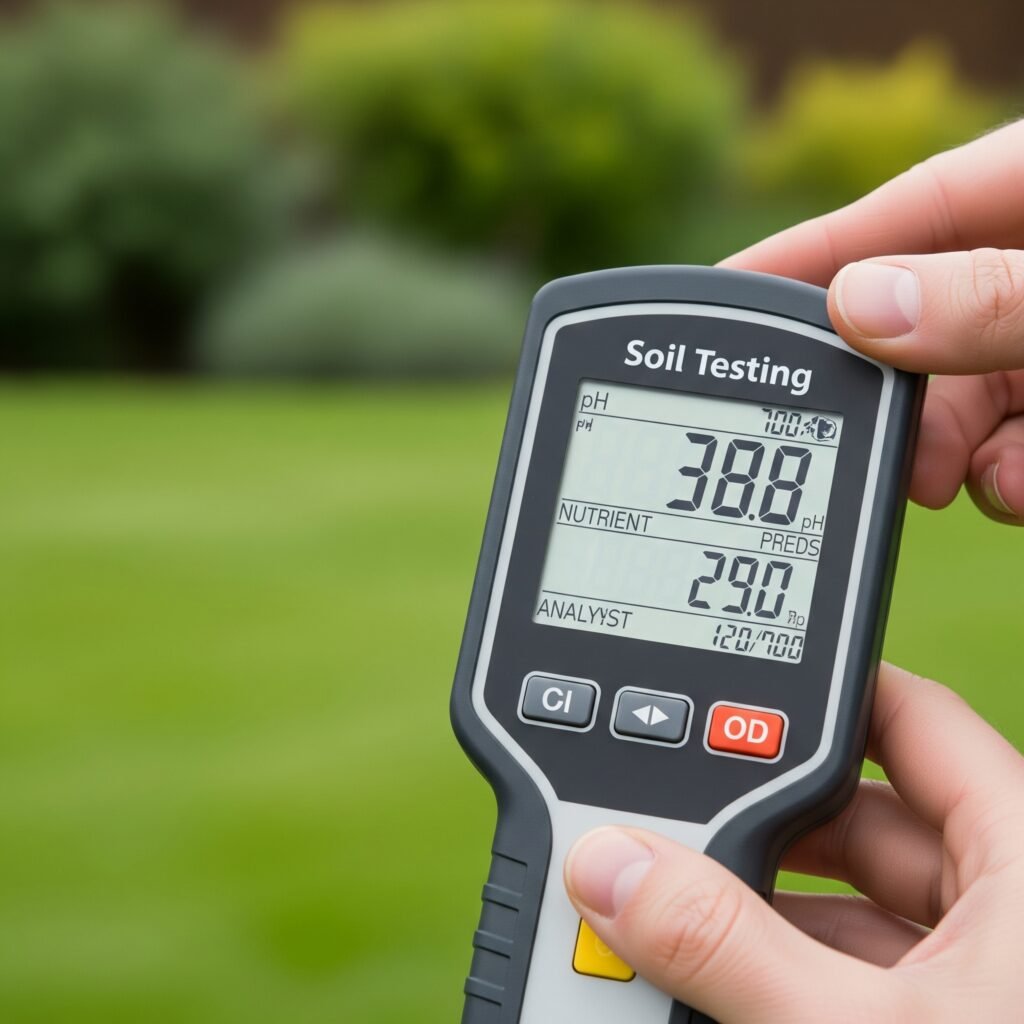
Proper Lawn Maintenance
Using the proper mowing height will significantly help to reduce weed establishment and establishment time. Taller grass shades the soil surface and will eliminate the opportunity for many weed seeds to germinate. Never remove more than 1/3 of the grass blade length with a single mowing to encourage grass to flourish.
Using sharp mower blades will make clean cuts to grass blades which help to reduce the amount of stress and susceptibility to disease. Dull blades will either tear the grass or mash, which also gives entrance point for diseases; and damages the grass and reduces its vigour.
Watering at the right time, will allow deep-root growth for the plants you are wanting and avoid situations that favour shallow-root penetrating weeds. Water deep and infrequent, usually once a week at a rate of one inch per week, including rainfall.
Strategic Overseeding
The best control you can do to help prevent weed establishment, is to have your turf be so thick and dense that there is no room for weeds. Oversowing fills the voids created in some areas of the lawn where weeds naturally tend to establish themselves, by creating competition for space, light, and nutrients in order to promote grass establishment. Proper timing for overseeding can help to germinate and establish the grass before weed competition rises. Fall overseeding is typically the easiest win for cool-season grasses to compete on their own with weed pressure since fall is the natural growing season for cool-season grasses to establish themselves.
When overseeding, proper use of grass seed varieties and knowing how they are adapted to your growing conditions will ensure your grass can fulfill the proper competition with weeds. Are the grass varieties you have chosen in the overseeding process for your landscape adapted to your sun/shade, drought and traffic species tolerances?
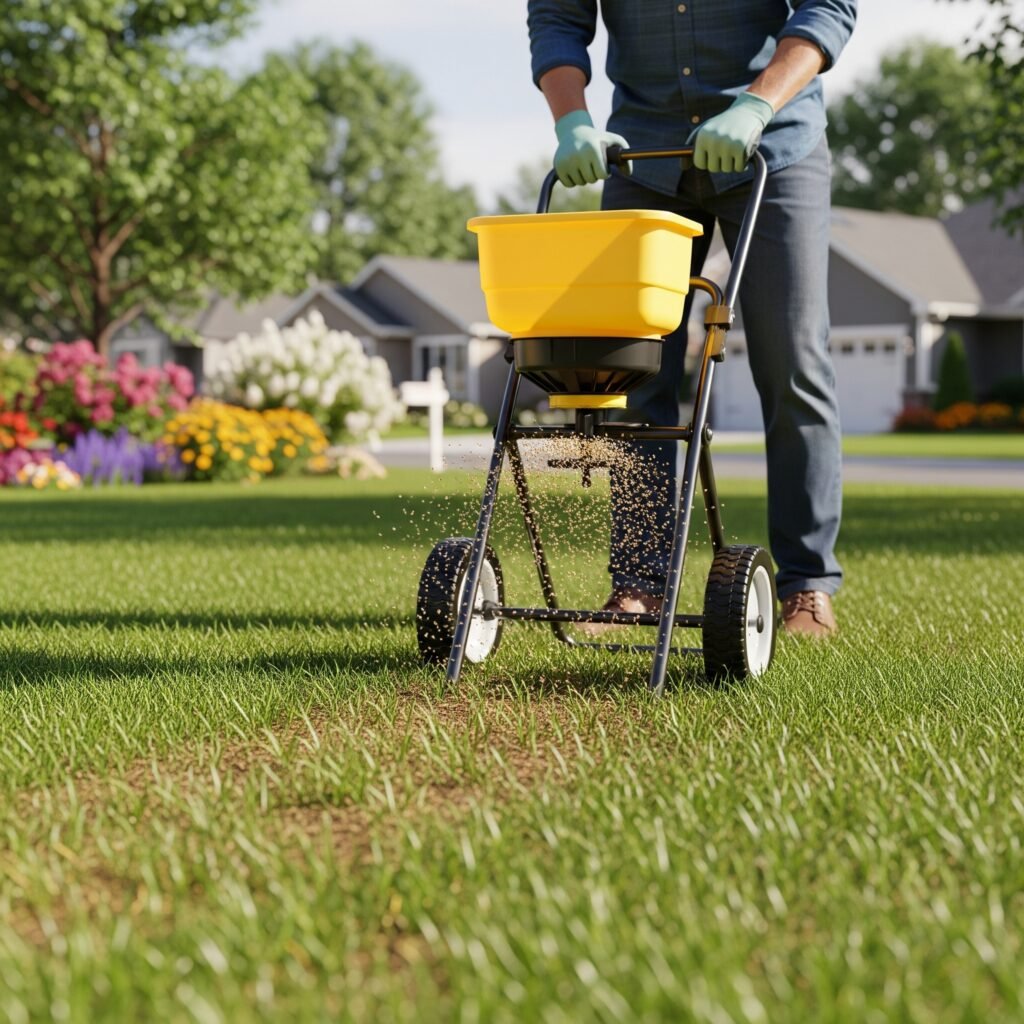
Integrated Weed Management
Regular monitoring and early treatment of weed problems before they become established. The more you walk around from time to time and through your property the easier it is to spot new weed species and other areas where weeds are problematic for you.
Record keeping provides a landscape history of how well various control methods worked for specific weeds in your landscape. When documenting, be sure to note application dates, products used, and their assessment of conditions when applying and outcome following to assist in future planning of timing and control.
Consulting with a professional has the advantage of increased landscape experience, as well as pest and weed recognition experience if you are experiencing particularly challenging weed problems or where the infestation is too widespread for you to successfully implement the strategies on your own. Certified professionals would also have access to many professional-grade products that are not available to homeowners to help with specific weed techniques or control.
The one takeaway of long term success is: “The most successful weed management programs are about 80% prevention and maintenance and 20% active weed management. A healthy dense lawn, or landscape will limit or inhibit weed ingress” – Certified Landscape Professional
Conclusion
To fully appreciate and maintain the desired aesthetics of our lawns and landscapes we need to understand the various types of lawn weeds we might find, from aggressive perennial weeds like dandelions and Canada thistle, to insidious annual weeds like crabgrass and chickweed. Each weed type must be understood and then controlled in its own unique way.
The most significant key to the successful identification and control of lawn weeds is to carefully combine appropriate timing with correct identification and acceptable weed control. Remember, it is always easier and more cost-effective to prevent weeds before they are established with healthy soil, thick turf and correct management practices.
Whether you choose to use natural, chemical or integrated methods to control the weeds, be consistent and have patience. Most weed issues develop over time so in most cases it will also take time and lot of effort to remove them permanently. Stick to the methods mentioned in the guide and you should be comfortable to handle any weed challenge and bring back that beautiful lawn you want.
You can begin by identifying the weeds in your landscape, then write up a comprehensive control approach that both recognizes the initial problem and the prevention of weeds in the future. Once you start promoting development of better management practices you will see the fruits of your labour in a healthier, more enjoyable landscape to enjoy for years to come.
Sound good? Get started by inspecting your lawn this weekend, take pictures of the weeds that you cannot identify, and get your seasonal planned control in place.
FAQs
What kinds of lawn weeds are most common for homeowners?
The most common kinds of lawn weeds include dandelion, crabgrass, white clover, plantain and chickweed. The five weeds cover most of the climates/regions and lawn types in the world. Crabgrass is an annual grassy weed, while dandelions and plantain are perennial broadleaf weeds with a deep taproot. White clover (Trifolium repens) spreads by runners while chickweed (Stellaria media) is opportunistic, growing in ideal cool, moist conditions. Each represents a different control strategy, based on their growth habits and life cycles.
When do I apply pre-emergent herbicides to control weeds?
To prevent annual weeds such as crabgrass (Digitaria sanguinalis) from germinating use pre-emergent herbicides in early Spring, with soil temperature of 55-60F (typically when forsythia (Forsythia spp.) has completed bloom). Though much different then post-emergent treatment for established annual weeds, season-long pre-emergent treatments should incorporated with a second application in late summer, to prepare for growth of winter annual weeds. Applying at the right time is geographically-dependent. Northern states delay application while southern states are earlier. A calendar is a time representation, tools such as soil temperature are a more reliable application time framework.
Can I remove poison ivy and other toxic weeds safely myself?
While you can remove toxic weeds such as poison ivy, the caution you must take is acute! Be sure to ensure you wear long sleeves, long pants, gloves and eye protection. Do not burn poison ivy, the smoke can irritate lungs. Consider using plastic bags to avoid direct skin contact and wash all tools and clothing in hot water after use immediately. For large infestations or if you are extremely sensitive to plant toxins, an herbicide application or professional removal are options.
How do I tell the difference between grassy weed types and regular grass?
Grassy weeds usually grow faster than the surrounding turf, which results in uneven growth. You should look for differences in blade width, color and growth habit. The blades of crabgrass are wider but develop with a sprawling habit. Nutsedge has a triangular stem that is noticeable can be felt when rolled between your fingers. Many grassy weeds have seed heads which are very distinctive and are generally produced by grassy weeds but not by regular grass turf. The growing season is the best time to identify grassy weed origin types, as these differences described are the most noticeable
What is the best, most effective long-term strategy to prevent common lawn-weeds?
The best effective long-term strategy seems to incorporate cultural practices to maintain healthy dense turf which will prevent weeds when passive. This will involve sound soil management, fertilization/soil-amendments, proper mowing practices and sufficient watering applications. Dense thick grass will rapidly out-compete any weeds for space, light or nutrients. A soil test will ultimately determine growing conditions for similar or desirable plants, while providing less optimal circumstances for weed emergence as well. Preventing through cultural practices proves more valuable than herbicide reactive treatments alone.
